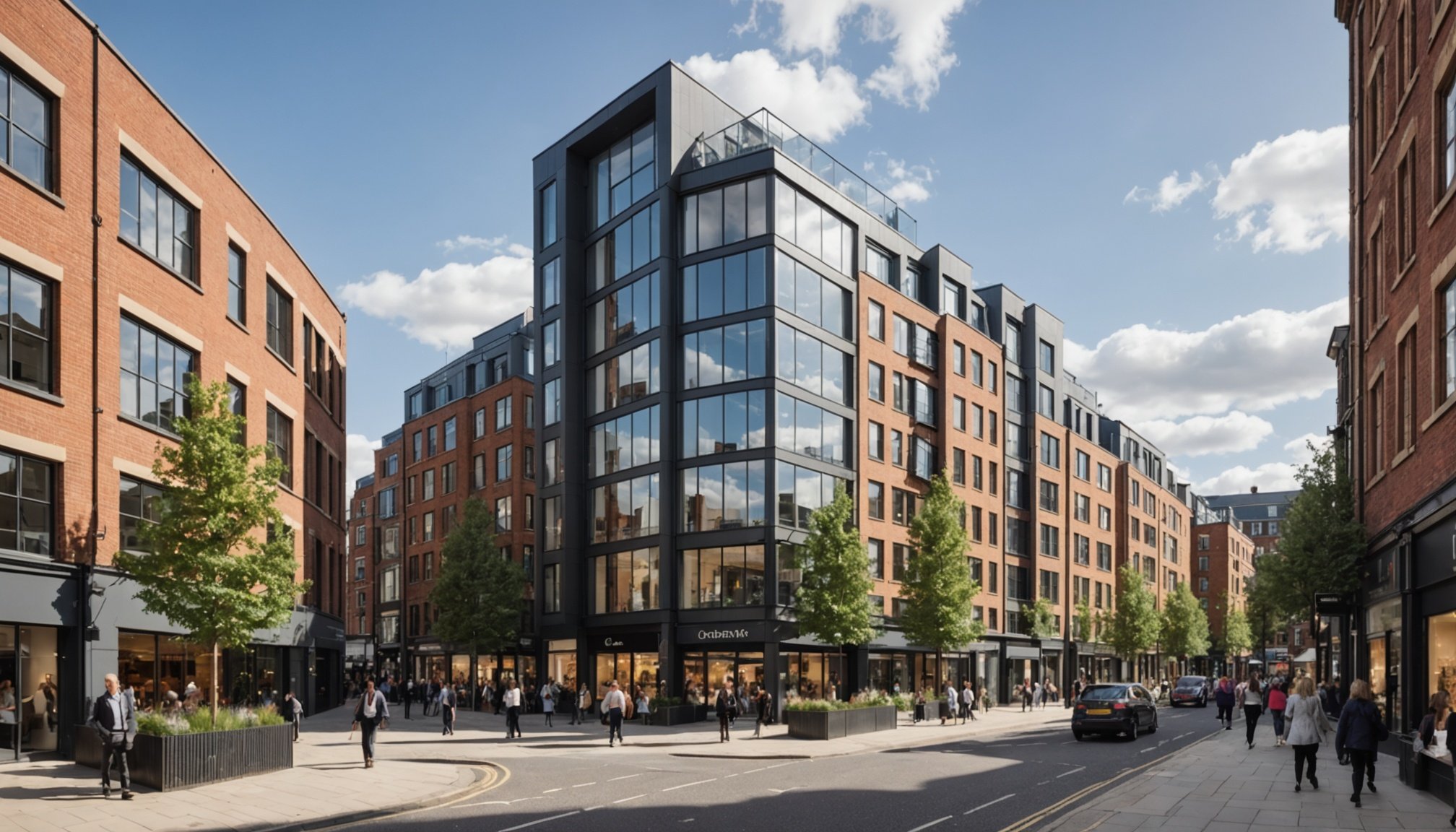Unpacking the Pros and Cons of Investing in Mixed-Use Developments Across the UK
Investing in mixed-use developments has become an increasingly popular strategy in the UK, offering a blend of residential, commercial, and sometimes even recreational spaces. This approach can be highly appealing, but it also comes with its own set of challenges and considerations. Here, we will delve into the pros and cons of investing in these multifaceted projects, exploring the benefits, the pitfalls, and the key factors to consider.
The Benefits of Mixed-Use Developments
Mixed-use developments are designed to integrate various land uses into a single project, creating vibrant, self-sustaining communities. Here are some of the key advantages of investing in such projects:
In the same genre : Navigating the Legal Maze of Property Boundary Disputes in the UK: A Comprehensive Guide
Enhanced Community Engagement
Mixed-use developments often foster a sense of community by providing local residents with amenities such as shops, restaurants, and public spaces. This can lead to stronger community bonds and a more cohesive local environment.
"By integrating different land uses, we can create communities that are not just places to live, but vibrant hubs of activity," says Jane Smith, Managing Director of Urban Development Ltd.
Environmental Benefits
These developments can be more environmentally friendly compared to single-use projects. For instance, they can reduce the need for lengthy commutes by providing housing, workplaces, and amenities in close proximity.
Also to read : Evaluating the Future of UK Commercial Real Estate in a Post-Pandemic Era: Key Insights and Strategies
| Aspect | Single-Use Development | Mixed-Use Development |
|---|---|---|
| Transportation | Often requires lengthy commutes | Reduces need for commutes |
| Energy Generation | Typically relies on external energy sources | Can incorporate on-site renewable energy |
| Green Spaces | Limited green areas | Often includes integrated green spaces |
Urban Planning and Infrastructure
Mixed-use developments align well with urban planning goals, such as promoting dense, walkable neighborhoods and reducing urban sprawl. They also encourage the efficient use of infrastructure, including public transportation and community facilities.
"Mixed-use developments are a key part of our urban planning strategy to create more sustainable and livable cities," notes Tom Johnson, a senior urban planner at the UK's Department for Levelling Up, Housing and Communities.
Economic Potential
These projects can generate significant economic benefits by attracting businesses, creating jobs, and stimulating local economic growth. They also offer investors a diversified portfolio, spreading risk across different types of property.
The Challenges of Mixed-Use Developments
While mixed-use developments offer numerous advantages, they also present several challenges that investors need to be aware of.
Complexity in Planning and Execution
One of the primary challenges is the complexity involved in planning and executing these projects. They require careful coordination between various stakeholders, including local authorities, developers, and community groups.
"The planning process for mixed-use developments can be incredibly complex. It requires a deep understanding of local policy, community needs, and environmental considerations," explains Sarah Lee, a planning consultant.
Higher Upfront Costs
Mixed-use developments often involve higher upfront costs compared to single-use projects. This includes the cost of land acquisition, design, and construction, as well as the need for more extensive infrastructure.
| Cost Component | Single-Use Development | Mixed-Use Development |
|---|---|---|
| Land Acquisition | Generally lower | Often higher due to prime locations |
| Design and Construction | Simpler designs | More complex designs requiring multiple uses |
| Infrastructure | Basic infrastructure | Advanced infrastructure including public spaces |
Managing Diverse Stakeholder Interests
These projects involve managing the interests of various stakeholders, including residents, businesses, and local authorities. This can be challenging, especially when there are conflicting demands or expectations.
"Balancing the needs of different stakeholders is crucial. It requires strong community engagement and public health considerations to ensure the development benefits everyone involved," says Dr. Mark Davis, a public health expert.
Long-Term Maintenance and Management
The long-term maintenance and management of mixed-use developments can be more complicated than single-use projects. This includes ensuring the upkeep of shared spaces, managing energy generation and use, and maintaining the overall quality of the built environment.
Key Factors to Consider
When considering an investment in a mixed-use development, there are several key factors to keep in mind:
Local Authorities and Policy
Understanding local planning policies and regulations is essential. Investors should engage with local authorities to ensure that the development aligns with their long-term plans and vision for the area.
"Local authorities play a critical role in shaping the built environment. Investors need to work closely with them to ensure that their projects contribute positively to the community," advises Michael Brown, a local government official.
Community Engagement
Community engagement is vital for the success of mixed-use developments. Investors should involve local communities in the planning process to ensure that the project meets their needs and expectations.
Environmental Impact Assessments
Conducting thorough environmental impact assessments is crucial to understand the potential effects of the development on the local environment. This includes considering factors such as energy generation, green spaces, and climate change mitigation.
| Environmental Factor | Considerations |
|---|---|
| Energy Generation | On-site renewable energy sources, energy efficiency measures |
| Green Spaces | Integration of parks, gardens, and other green areas |
| Climate Change | Strategies for net zero emissions, resilience to climate change |
Public Health Outcomes
The design of mixed-use developments can significantly impact public health outcomes. Investors should consider factors such as access to green spaces, walkability, and the availability of healthy food options.
"The built environment has a profound impact on public health. Mixed-use developments can be designed to promote healthier lifestyles and better health outcomes," notes Dr. Emma Taylor, a public health specialist.
Practical Insights and Actionable Advice
For those considering investing in mixed-use developments, here are some practical insights and actionable advice:
- Conduct Thorough Research: Understand the local market, planning policies, and community needs before investing.
- Engage with Local Communities: Involve local communities in the planning process to ensure the project meets their expectations.
- Consider Long-Term Maintenance: Plan for the long-term maintenance and management of the development, including the upkeep of shared spaces and infrastructure.
- Focus on Sustainability: Incorporate sustainable practices, such as renewable energy and green spaces, to enhance the environmental and social benefits of the project.
- Diversify Your Portfolio: Spread your investment across different types of property within the mixed-use development to manage risk.
Investing in mixed-use developments in the UK can be a rewarding strategy, offering a range of benefits from enhanced community engagement and environmental sustainability to economic potential and diversified investment portfolios. However, it is crucial to be aware of the challenges involved, including complexity in planning, higher upfront costs, and the need for careful stakeholder management.
By understanding the pros and cons, engaging with local communities, and considering key factors such as local policy, environmental impact, and public health outcomes, investors can make informed decisions that contribute to the creation of vibrant, sustainable communities for the future.
In the words of Jane Smith, Managing Director of Urban Development Ltd., “Mixed-use developments are not just investments; they are opportunities to shape the future of our communities and create better places to live, work, and thrive.”











